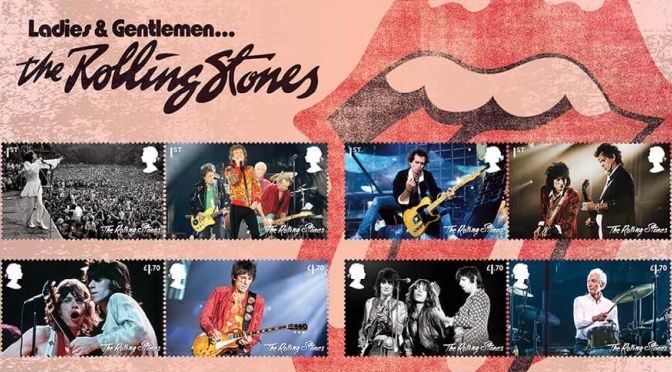The Rolling Stones was established in 1962. Jagger, Richards, Wyman, Watts, Jones. The band, like many British groups at the time, was inspired by American music. But whereas, say, the Beatles (formed in 1960) were influenced by Buddy Holly and Chuck Berry, the Stones were more influenced by Howlin’ Wolf and Muddy Waters. There was far more grit and growl to the Stones from the very beginning. It is hard—if not impossible—to imagine the Stones doing “A Taste of Honey” or “Till There Was You.”*
While the Stones were performing “Paint It Black,” the Beatles were having their faces plastered on lunch boxes and dishes (“Eat your peas, kids, and then you can see the Fab Four!”). There was Sgt. Pepper’s Lonely Hearts Club Band released in the spring of 1967. And there was Their Satanic Majesties Request before the year was out. The distinction can’t be much clearer.
The live performance of the Beatles that is probably the most widely known is that of “The Ed Sullivan Show” in February 1964 (although the band opened with “Till There Was You,” the second song they did, the one that gets all the “remember-when” clips, was “She Loves You”).
The live performance of the Stones that is most memorable in the collective consciousness is that. . .at Altamont, in 1969. (The Stones also appeared on “The Ed Sullivan Show,” in October 1964. The opening number was Chuck Berry’s “Around & Around.” The close was “Time Is On My Side.” So while the Beatles did a soft cover and ended with something more raucous, comparatively speaking, the Stones did exactly the opposite.)
Think only of one of the Stones’ most famous love ballads, “Angie,” and compare it to the Beatles’ “Michelle.” One has edge. One has schmaltz.
It would seem that there would be strife and discord and conflict such that the band would have centrifugally flown apart years ago, but although age has caused there to be departures from the Stones, there was the quitting/firing of Brian Jones in ’69 and the quitting of his replacement, Mick Taylor, in 1974, which seem to be the most contentious.
Meanwhile, one would imagine, even after watching Get Back, that the Beatles could have had a long, pleasant run, rather than their dissolution in 1970, a 10-year run.
Clearly there are dynamics at play in any organization that are never clear to those outside of it.
In 1964 Hallmark, the card company, released Beatles stamps. They resemble postage stamps. In the years since there have been a number of bona-fide Beatles stamps released by various governments. Remarkably, last year the U.S. Postal System released a John Lennon stamp, which seems bizarre given that the FBI had had Lennon under investigation for a number of years and the Immigration and Nationalization Service tried to have him removed from the country. However, the reason why stamps with pictures of people like Lennon are created is not so that they can actually be used, but collected. Money comes in for the stamps but money does not go out in the form of having a stamped envelope collected, processed and delivered. For fiscal year 2021 the USPS had a net loss of $4.9 billion; perhaps it needs to print more stamps.
And it is philatelic activities that has gotten me here.
On January 20, 2022, the U.K. Royal Mail** is “Celebrating 60 Years of Iconic Music and Legendary Shows.” Simply, celebrating The Stones.
